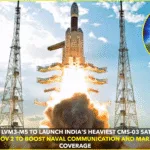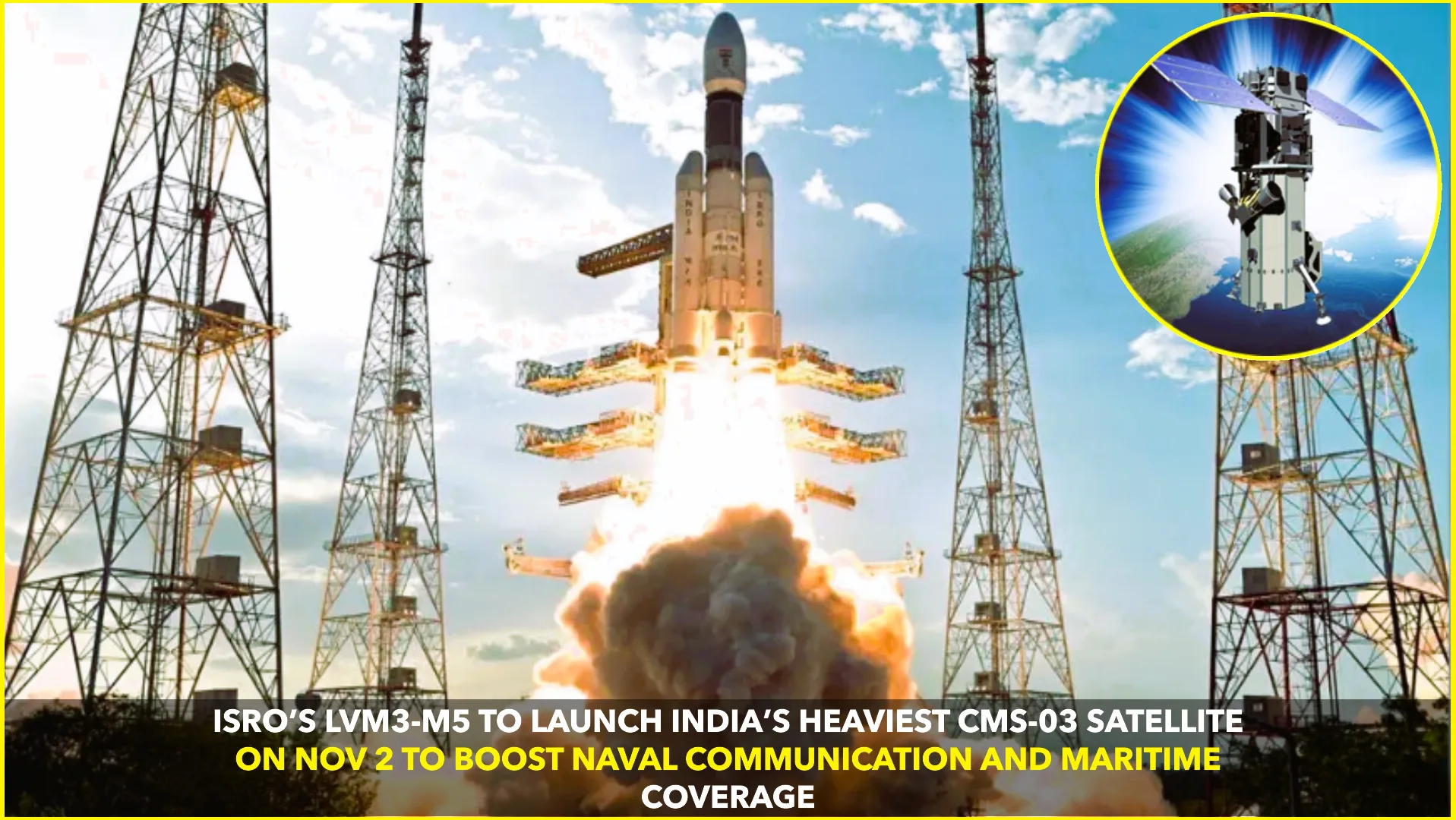After the triumphant success of Chandrayaan-3, which made India the first nation to land near the Moon’s south pole, the Indian Space Research Organisation (ISRO) is gearing up for another milestone. On November 2, 2025, ISRO will launch its powerful LVM3-M5 rocket from the Satish Dhawan Space Centre, Sriharikota, carrying CMS-03, India’s heaviest communication satellite weighing around 4,400 kilograms.
According to ISRO’s mission brief, this will be the fifth operational flight of the LVM3 vehicle, which previously carried Chandrayaan-3 to the Moon in 2023. The launch window opens early morning, and weather conditions will determine the final liftoff time. The mission marks another big leap for India’s space communication capabilities. (Source: ISRO)
Strengthening India’s Maritime Communication
CMS-03 has been designed primarily for the Indian Navy to enhance real-time communication across India’s vast maritime zones. It will provide secure, high-bandwidth communication links between naval ships, submarines, aircraft, and command centers, improving coordination and surveillance capabilities.
The new satellite will cover both the Indian mainland and oceanic regions, offering advanced connectivity even in remote waters of the Arabian Sea, Bay of Bengal, and Indian Ocean. Experts say it will act as a “communication lifeline” for naval operations. (Source: The Economic Times)
India’s Heaviest Communication Satellite
At nearly 4.4 tonnes, CMS-03 surpasses previous ISRO communication satellites in weight and power. It will operate in multiple frequency bands — including C, Extended C, and Ku bands — to ensure uninterrupted service across land and sea.
Engineers have equipped CMS-03 with advanced transponders and improved onboard power systems to handle large data volumes efficiently. Its design ensures a 15-year operational lifespan, making it one of ISRO’s most durable communication assets. (Source: Times of India)
The Rocket Behind the Mission: LVM3-M5
The LVM3, also known as Launch Vehicle Mark-3, is ISRO’s most powerful rocket to date. Standing over 43 meters tall, it can carry up to 8 tonnes to low-Earth orbit and 4 tonnes to GTO (Geostationary Transfer Orbit).
The upcoming LVM3-M5 mission will deploy CMS-03 into a GTO at approximately 36,000 kilometers altitude, from where it will use its onboard propulsion to reach geostationary orbit. The rocket’s reliability and payload capacity make it a cornerstone of India’s future heavy-lift missions. (Source: India Today)
Strategic Importance for India
CMS-03 is not just another communication satellite — it’s a strategic asset that will significantly bolster India’s defence communication network. By connecting naval units over long distances and improving satellite-based reconnaissance, it enhances both national security and maritime situational awareness.
With India’s growing focus on the Indo-Pacific region, reliable communication is crucial for maritime diplomacy and naval readiness. The CMS-03’s integration into naval operations will make India’s surveillance network more efficient and secure. (Source: Mathrubhumi English)
Building on Chandrayaan-3’s Momentum
ISRO’s confidence and credibility have grown since the Chandrayaan-3 triumph in August 2023, which showcased India’s engineering prowess to the world. The successful deployment of CMS-03 will further strengthen ISRO’s track record in complex missions involving heavy payloads and precise orbits.
The agency is also preparing for upcoming projects like Gaganyaan, India’s first human spaceflight program, expected in the coming years. Together, these missions underline India’s emergence as a global space power. (Source: Navbharat Times)
As the countdown begins for November 2, anticipation builds across India. The success of LVM3-M5/CMS-03 will not only enhance the country’s maritime communication network but also reaffirm ISRO’s role as one of the world’s leading space agencies — bridging science, strategy, and national pride through the power of innovation.










